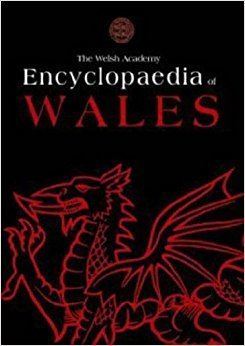 | ||
Similar Nigel Jenkins books, Other books | ||
The Welsh Academy Encyclopaedia of Wales, published in January 2008, is a single-volume-publication encyclopaedia about Wales. The Welsh-language edition, entitled Gwyddoniadur Cymru is regarded as the most ambitious encyclopaedic work to be published in Welsh since the 19th-century. The English-language and Welsh-language editions were published simultaneously.
Contents
Background
Unlike the Welsh Encyclopedia, published in ten volumes, between 1854 and 1879, by Thomas Gee, the encyclopedia is about only Wales, In this respect it is more like the Cymru: Yn Hanesyddol, Parthedegol, A Bywgraphyddol ("Wales: Historical, Regional, & Biographical"), edited by Owen Jones and published between 1871 and 1875.
The encyclopaedia indexes 6,000 facts about Wales compiled by 400 researchers over ten years. Biographical articles are restricted to individuals no longer living. The editors are John Davies (consultant editor for both versions), Menna Baines (editor of the Welsh language version), Nigel Jenkins (editor of the English version) and Peredur Lynch. The project was started in January 1999 and the book eventually published January 2008, although 14 November 2007 was the original launch date.
Funded for the project, which cost £300,000, came from the Literature Wales (formerly known as "the Academi"), University of Wales Press and also from the Arts Council of Wales lottery funding.
Publishers claim they have included facts from every community in Wales. Ashley Drake of the University of Wales said that it is a "celebration of Wales and Welshness. With everything you could think of about Wales in [the encyclopaedia]," adding "Every town, every village, every city is mentioned in there," and including famous people in the fields of science, religion, politics, popular culture, amongst others.
Facts about the encyclopedia
Coverage
The encyclopaedia includes such important facts as these:
Criticism
In her report on BBC Wales Today, on 12 July 2007, correspondent Caroline Evans said: "It is a long way from the infamous entry in an index of a 19th-century encyclopaedia which read 'For Wales, See England'."
